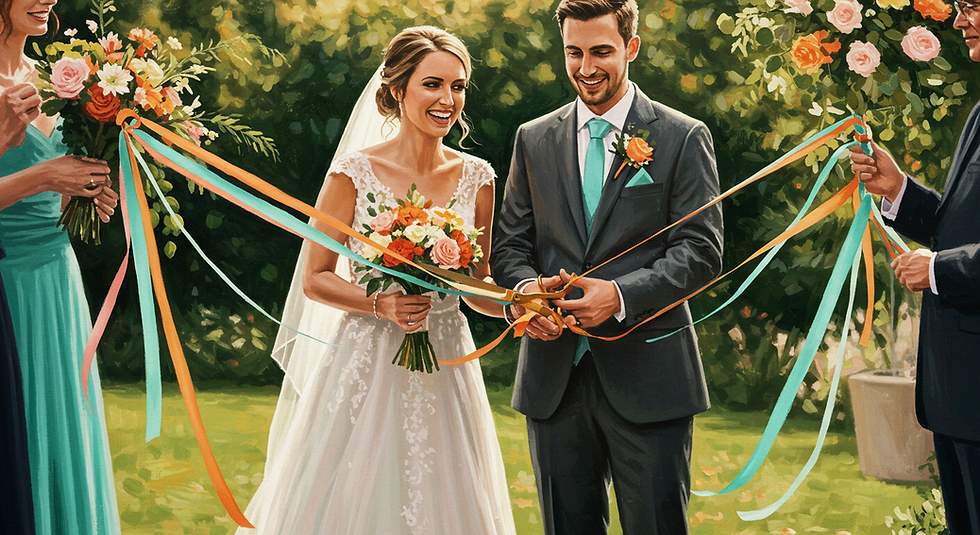What's with the butterfly?
- Nick Wells
- Jul 31, 2024
- 4 min read
Updated: Oct 17, 2024
Branding, they say, matters.
So I had a good long think about the logo for This Moment, ultimately deciding to go with a butterfly. You can ascribe to this any meaning you wish as butterflies, it turns out, have gone through something of a metaphorphosis. In this post, though, I'd like to share with you a triptych of ways in which butterflies hold special symbolism for me and my business.
On a personal level:
When I was much, much younger than I am now - probably just beyond toddler-ish - we went to a local butterfly farm during the summer holidays. I'd love to be able to tell you which one it was and provide a link, but I'm afraid that I can't. I'd also love to be able to tell you why my parents went on to buy me an enormous poster featuring different types of butterfly with the name of each species labelled underneath, but again I'm afraid I can't. This poster must have stayed up for years in my room facing my bed as I can still recall a number of the species' names, despite showing no other interest in butterflies beyond the farm and, of course, Eric Carle's classic story of The Very Hungry Caterpillar.

Jump forward a couple of decades and, whilst we were engaged, my now wife and I had gone to London. My purpose was to meet a publisher for some educational work I was doing. Hers was to go to, amongst other things, the giant Confetti store to do some wedding planning. When we met up later, she had bought a treasure trove of butterfly based wedding paraphernalia, having previously shown little to no interest in butterflies whatsoever.
In literature, I do like a symbol that seems to have very little significance when first introduced, but which later goes on to play a central role in the text.
So I chose a butterfly as the logo for This Moment as, like many things in life, it had previously held little meaning but now evoked fantastic childhood and marital memories of moments which were important in life.
Mutualism
It turns out that butterflies are not just symbolic but also symbiotic. They exist in a symbiotically mutual state with flowers. When a butterfly lands on a flower, it's able to enjoy the sweet juice of the nectar. I've never knowingly tasted nectar, but I imagine it to be sweet. This process is not just beneficial for the butterfly, however, as when it lands on the flower, pollen is able to stick to the butterfly and is carried to other flowers which the butterfly visits, enabling reproduction to occur.
It strikes me that this kind of relationship between the butterfly and the flower holds similarities with the partnership between coach and thinker which Claire Pedrick and Lucia Baldelli describe in their book The Human Behind the Coach. They explore how,
"The artful coach is less eager, less ego, more ease, more depth. Artful coaching happens when you are in dialogue. In partnership. In flow."
This is about being human in its best form - supporting, listening, believing in the power of others to take responsibility for being the best version of themselves and partnering with them so that they can think through how to achieve this. The flower and the thinker are both gaining from these relationships. However, just as when the butterfly is gaining simply by being a butterfly, the coach can gain simply by being a coach through their act of service.
The butterfly effect
The third significance of butterflies is something I know there is no truth in, but which links to something I know that there is truth in.
The butterfly effect is an aspect of chaos theory. In essence, it is the idea that small, seemingly unimportant events might ultimately result in something with much larger consequences. The root of the theory is the story that, when a butterfly flaps its wings in one part of the world, the resulting tiny change in air pressure could eventually cause a storm elsewhere on the planet.
The butterfly theory has been widely debunked however, the concept is an appealing metaphor with, for me at least, close connections to coaching.
In her book, The Transformational Coach, Clare Norman asks us to,
"Imagine a beaver dam. Metaphorically speaking, if we pull one stick from that beaver dam, we allow a trickle of water through it. That trickle will start to push out more sticks, and as each stick floats away downstream, there's another gap for a little more water, then a little more until the water has washed away a whole section of the dam. That's how we should approach coaching; as though our job in the session is to help the thinker to remove just one stick from the dam. If they can remove that one stick, they'll continue to remove obstacles after the coaching is over because progress begets progress."
This is what I'd want for my coaching to be - all aspects of the butterfly: personal, powerful and supportive of progress.
You may have other associations with butterflies, like this 1970s, Carla Lane sitcom for instance, but I'll try to avoid those.
*****
If you've enjoyed reading this post, you can subscribe to receive notifications of future posts here.
Alternatively, if you'd like to find out more about my coaching or celebrancy services, you can book a discovery call here






Comments